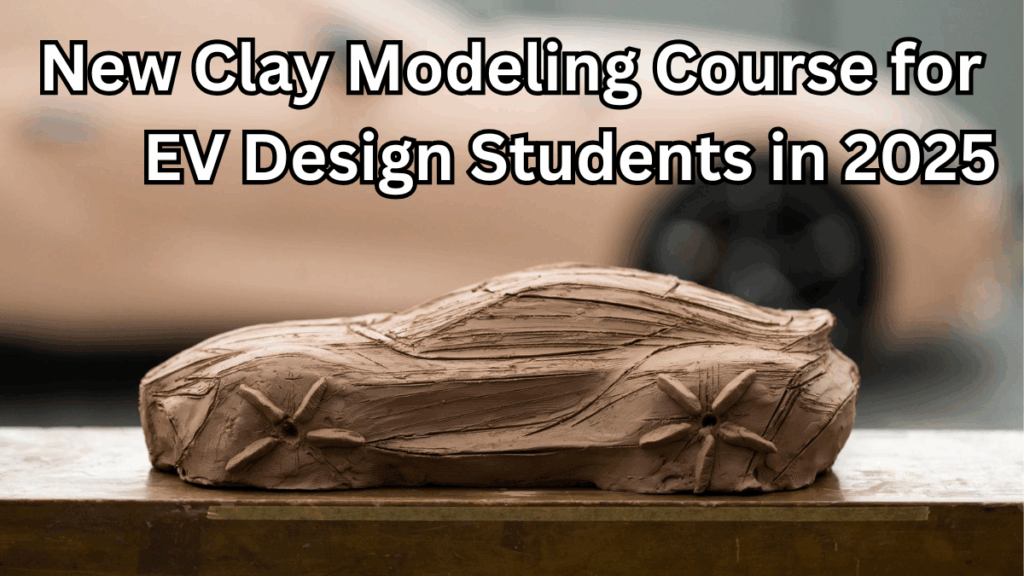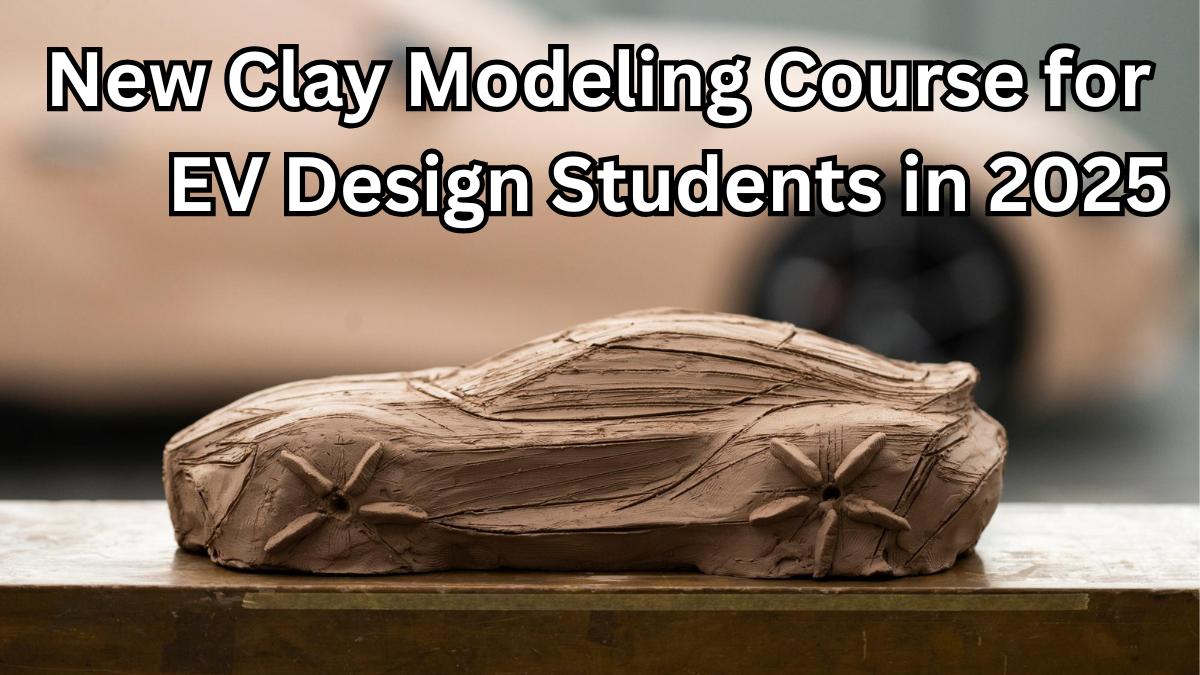In a bid to foster hands-on skills among budding EV designers, a brand-new Clay Modeling Course for EV Design has been launched for the 2025 academic session. This initiative is designed to bridge the gap between conceptual sketches and full-scale vehicle prototypes, giving students a real-world understanding of surface design, proportion, and 3D visualization.

Why Clay Modeling Still Matters in EV Design
Despite the rise of digital tools, clay modeling remains an essential part of the automotive design course curriculum. Here’s why it’s still highly relevant:
-
Offers tactile feedback and real-time evaluation of design
-
Enables collaborative iteration and peer reviews
-
Builds a strong foundational understanding of vehicle surfaces and proportions
-
Bridges design thinking with production feasibility
Course Highlights
| Feature | Description |
|---|---|
| Duration | 6 months (January–June 2025) |
| Eligibility | Open to undergraduate and postgraduate EV design students |
| Mode | On-campus (studio-based) with weekend masterclasses |
| Tools Covered | Clay modeling tools, armature building, foam cores |
| Capstone Project | Full-scale EV concept clay model presentation |
Hands-On Learning for Future EV Designers
This Clay Modeling Course for EV Design is not just about technique—it’s about cultivating creativity, patience, and problem-solving. Students will:
-
Sketch their original EV concept from scratch
-
Build scale and full-size clay models
-
Understand aerodynamics, ergonomics, and market trends
-
Learn how to work in a team setup like real-world design studios
“This is the most tactile, immersive way to bring a concept car to life,” says Rajeev Menon, lead instructor and industry veteran.
Industry Collaboration & Internship Support
As part of the curriculum, students will have the chance to:
-
Interact with professionals from top EV brands
-
Attend workshops conducted by clay modelers from Tata, Mahindra, and Ather
-
Secure internships at EV design labs across India
This makes the automotive design course not just educational, but also industry-relevant and future-proof.
What Makes This Course Stand Out?
| Differentiator | Benefit to Students |
|---|---|
| Real clay, not just digital modeling | Builds deep tactile understanding |
| Team-based projects | Simulates real-world design studio experience |
| Capstone EV project | Builds portfolio-ready work for job interviews |
| Industry exposure | Opens doors for internships and placements |
FAQs
Q1. Who can apply for the Clay Modeling Course for EV Design?
A: Students enrolled in EV or automotive design programs, as well as graduates looking to specialize in physical modeling.
Q2. Is prior experience in modeling required?
A: Not at all. The course starts with the basics and is ideal for both beginners and intermediate-level learners.
Q3. What are the career opportunities after completing this course?
A: You can work as a clay modeler, automotive surface designer, or EV prototype specialist. Many alumni move into product visualization or design consultancy.
Q4. Is this course recognized by automotive companies?
A: Yes, the course has tie-ups with multiple EV companies and is recognized as a valuable skill in the automotive design course ecosystem.
Final Thoughts
This Clay Modeling Course for EV Design is more than just a skill-building program—it’s a pathway to shaping the future of electric mobility with your own hands. Let your design leap off the paper and onto the studio floor.
Click here to learn more
